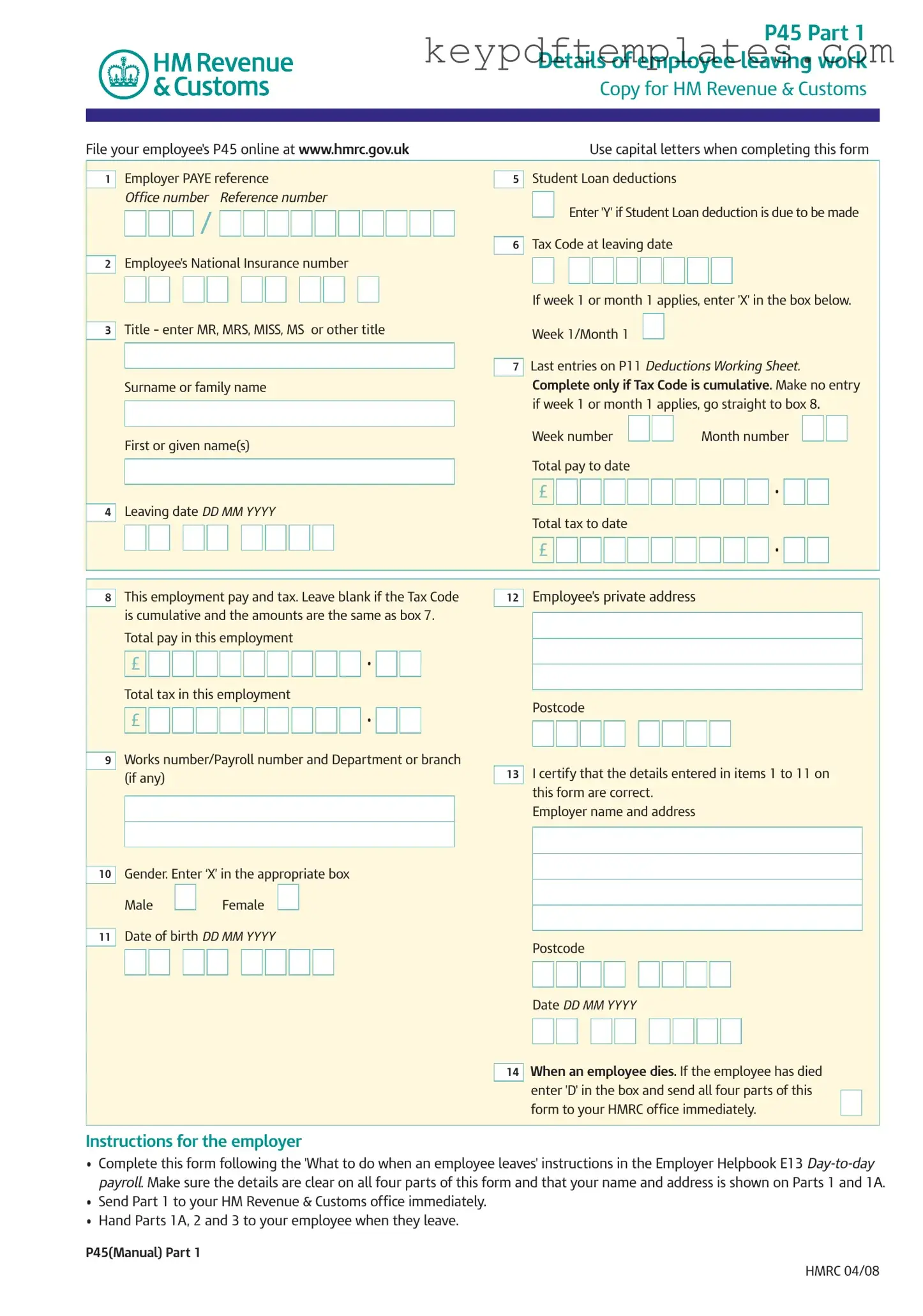Get P 45 It Form
The P45 It form is a document used in the United Kingdom to provide details about an employee who is leaving a job. This form helps to communicate important information regarding the employee's earnings and tax deductions to both HM Revenue & Customs and the new employer. Understanding the P45 It form is essential for ensuring a smooth transition between jobs and for managing tax responsibilities effectively.
Modify Document Online
